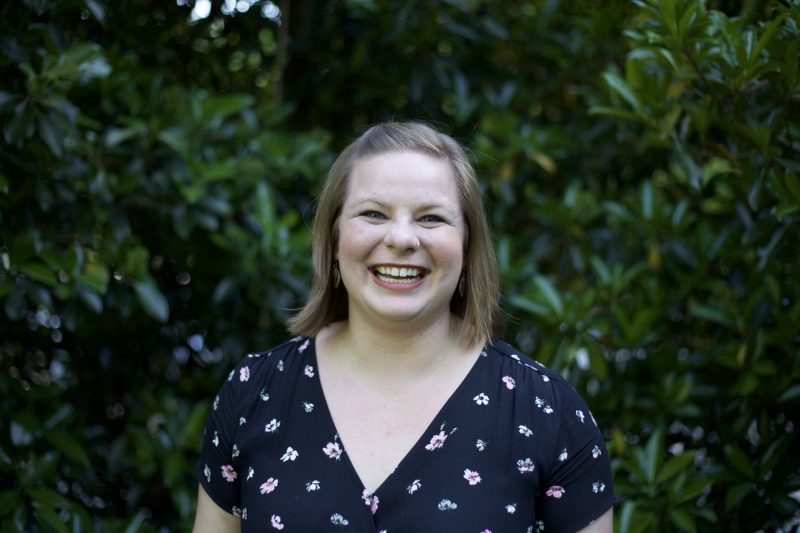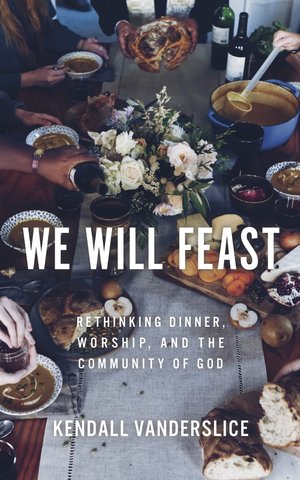I attended my first dinner-church service on a warm Thursday evening in the summer of 2015. As part of my coursework in Food Studies, I’d just completed a semester-long project on the formation of relationships over a meal – what anthropologists call “commensality.” The invitation to this service intrigued me. My own love of the Eucharist made me curious about how my gastronomic studies might be relevant to my commitment to my faith.
Two friends had invited me to their classmate’s new church, Simple Church in Grafton, Massachusetts. “They worship over dinner,” these friends told me, “and practice Communion as a full meal.” That evening we sang standing around the perimeter of the church’s fellowship hall while children danced along. We supped on soup made from produce grown on a nearby farm and fresh bread baked by the pastor. We read Scripture, then we discussed it together. Finally, we closed the evening with generous pours of grape juice, a parting reminder that feasting on Christ’s body and blood draws us together as community and sends us out to commune with our neighbors as well. Here was Eucharistic theology in practice.

That evening pulled together my interests in commensality and Eucharistic theology, sparking a research project that would take me across the country over the next two years. I started with three months doing ethnographic research at Simple Church, interviewing congregants and participating in the community while seeking insight into how the act of eating together shifted their understanding of worship, of church, of the Lord’s Supper, and of God. How did this practice shape their theology?
One by one, I learned of other churches worshipping in similar ways—churches from a range of denominations, in a range of geographic locations, made up of a range of ages and socioeconomic backgrounds. Each pastor had a similar story: they longed for a church that addressed the physical needs of the community and that offered a safe entry into church life for those who were hesitant to spend Sunday morning in a pew.
The table seemed the most natural choice, and it conveniently came with theological and historical significance as well. The New Testament books of Acts and 1 Corinthians speak of the church gathering in the context of meals—quite literally eating and drinking in remembrance of Christ—and Tertullian’s records of the early church affirm the significance of meal-based worship as well.

I travelled the country to visit nine of these “dinner” churches, from Brooklyn to Seattle, San Pedro, California to Madisonville, Kentucky, and to record their stories for my book We Will Feast (recently released by Eerdman’s). While every church has its own feel, its own culture, the concept is the same: connect with others in a language spoken by all—food. Serving a hearty meal at a table with real napkins, dishes, and silverware, the services aim to feel like a dinner party, fostering conversation among men, women, and children who might otherwise never meet.
These churches encompass a range of denominations, both conservative and progressive, and they meet in a variety of settings: in church basements, restaurants, gardens, and art galleries. Found in urban, suburban, and rural areas, they attract wealthy, middle class, and unhoused neighbors. Their ecology is defined by what they do rather than where they are. The intergenerational and multi-ethnic congregations create engaging dialogue; and the meals become a space where diners can disagree and still maintain close relationships.

While my own theological convictions differ from almost every pastor I researched (and they differ from one another drastically as well!) I was welcomed and cared for by every community. I witnessed congregations implementing a way forward in the midst of significant theological and political disagreement, refusing to succumb to the polarization all around them. In the midst of Eucharistic debates during the Reformation, John Calvin wrote of the cruel irony that the very meal intended for unity of the church became the greatest source of division instead. By worshipping around the table and practicing a full meal as Eucharist, these churches attempt to recapture the communion-building intention of the sacrament and offer hope for churches disheartened by the divisions that seem never to end.

Kendall Vanderslice is a graduate of Boston University (MLA Gastronomy) and Duke Divinity School (Master of Theological Studies). This article is based on her book We Will Feast: Rethinking Dinner, Worship, and the Community of God (Eerdmans 2019).

